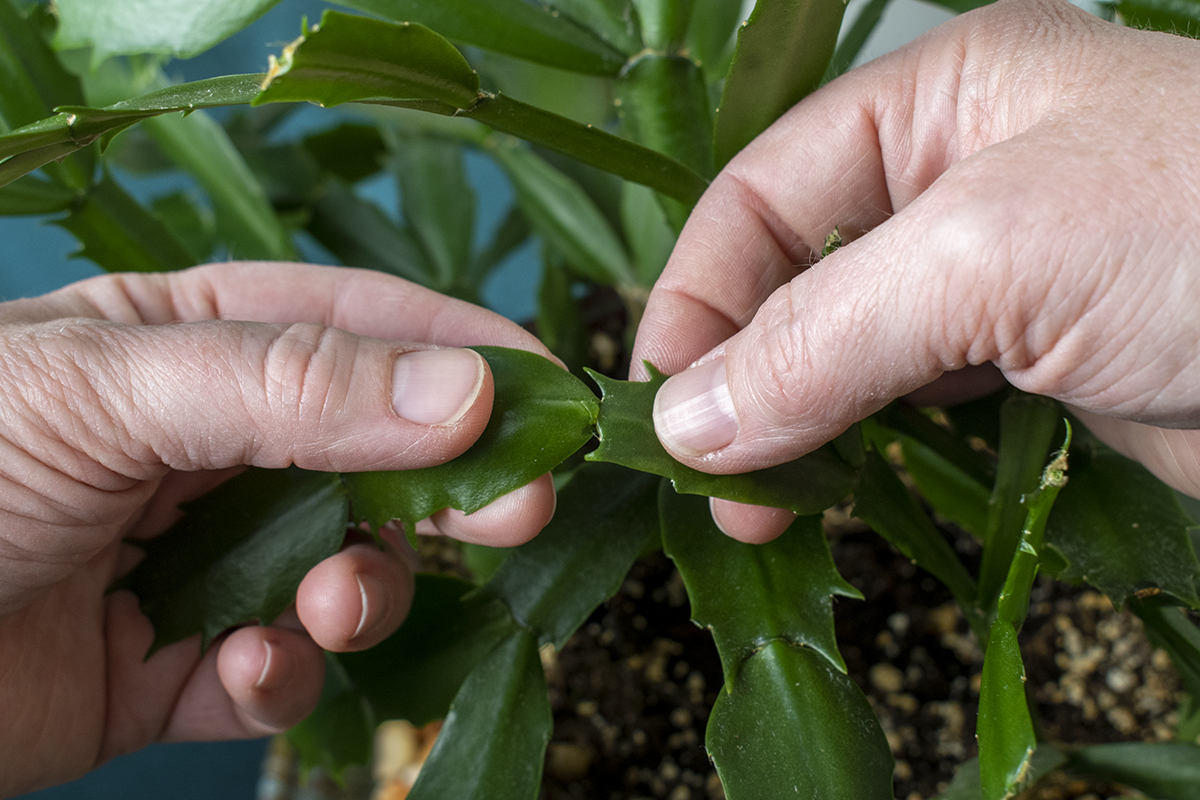The crab orchid is also called the Christmas cactus. The reason why it is called the latter name is because the crab orchid that grows in the northern hemisphere tends to bloom between December and January every year. The crab claw plant is a beautiful plant that is easy to grow given the right growing conditions. Simple pruning can help your orchid grow fuller and more lush. Another benefit of pruning is reducing the size of existing plants. With proper preparation, along with correct pruning techniques, you can unleash the full potential of your crab claw plant.
Remove Stem Nodes
If you want the crab claw plant to grow fuller, remove 1 or 2 segments of the stem. If your purpose of pruning is to promote growth, you don’t need to remove too many nodes. Removing only 1/3 of the stem nodes can reduce the size of the plant.
If you want to propagate more crabgrass, cut the stem nodes longer. To grow new plants from stem nodes, you need to remove Y-shaped stem nodes from the mother plant. The removed part must contain 3 to 4 stem segments. You can plant as many stem segments as you want in separate pots.
Wait for the crab claw plant to bloom before pruning it. After the flowering period, the crab claw orchid will enter the next growth cycle and grow new segments. This is the best time to prune, as pruning stimulates the plant to grow more branches.
- If you can’t prune right away, wait until late spring.
Grasp the gaps between the stem joints and twist off the stem joints. The stem nodes are square, with a node between each stem node. The node is the weakest part of the entire plant. As long as you grab and twist the node, the stem node will break. You must be quick when twisting, otherwise you will injure the plant.
- If you can’t twist it for a while, use your fingernails to pinch off the node.
- If you think the twisting action will cause damage to the plant, use garden shears to cut the node off at the same place.
Gather the longer stem sections. Stem nodes longer than 2 pieces can be used to propagate new crab claws. This process is also called cutting. Stem sections that are too short can be thrown away directly.
Promote Stem Node Rooting
Allow 2 days to dry the stem segments. Drying the stem nodes is to allow the fractures to recover slightly and prevents the stem nodes from rotting when there is too much water in the plant. Sometimes it takes up to 4 days to dry the stem sections.
Prepare a small pot and a well-draining soil mix. Moist peat and sand mixed can provide sufficient nutrients for plants. This combination also provides good drainage, which is very important for the growth of cacti. If you also want to improve soil drainage, add pumice to the bottom of the pot.
Insert each stem segment into the soil. The length of the stem nodes in the soil must be about 2.5cm so that the plant can absorb enough water and nutrients. If desired, you can plant several stem segments in the same pot at this point.
Place the pot in a cool place out of direct sunlight. Although crabgrass can easily adapt to shady conditions, it grows more vigorously in bright, bright locations without direct sunlight. Direct sunlight can easily burn the leaves of the crab claw plant, so try to avoid it.
- Water should be applied sparingly, otherwise it will cause the plant to rot.
Transplant the stem segments into larger pots. After 2 to 3 weeks, signs of growth will appear at the upper ends of the stem nodes. Usually, when the upper end of the stem node turns red, you can transplant it to a larger pot. Add loose potting soil mix to the pot. You can also use the soil from which the mother plant was planted to create new plants.
- The plant may look wilted at first, but don’t worry, this is normal. Plants will return to normal as they adapt to the new environment.
- At this time, the plants can receive more indirect light.
Water your crab claw plant frequently. When the stem nodes grow roots and new segments, the plant can retain water like an adult plant. You need to care for new plants as you would adult plants, keeping the soil moist at all times.
- Check the condition of the soil to see if it needs watering. You can water again when the top layer of soil feels dry to the touch.
Repot the flowers every 3 to 4 years. Crab orchid prefers to grow in smaller pots, so repotting does not need to be done too frequently. Late winter or early spring after the flowering period is over is a good time to repot.
Tips
- The plucked stem segments make a great gift for friends. They can grow beautiful crab claws from stem joints.
- Crab claw orchid is most suitable for growing in an environment of 18℃-24℃ and air humidity of 50%-60%. If you plan to grow crab claws indoors, you’d better make sure the indoor temperature and humidity meet the above requirements.

